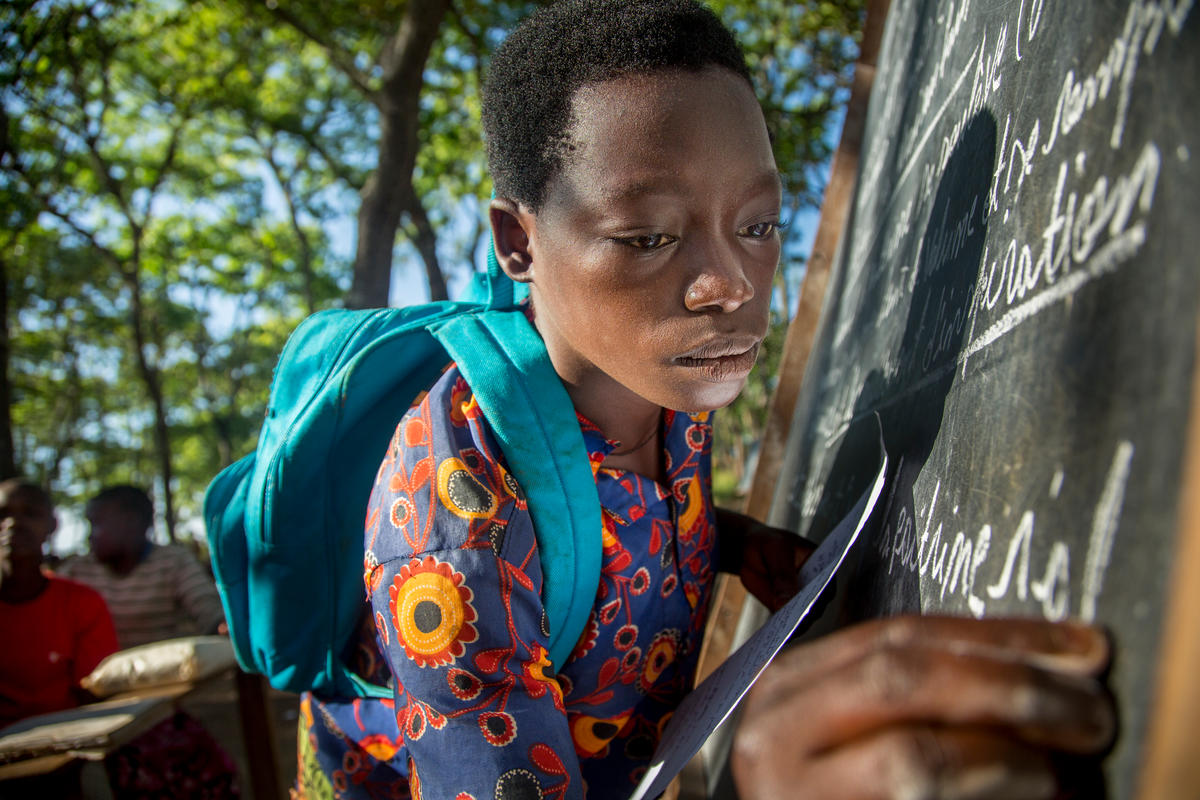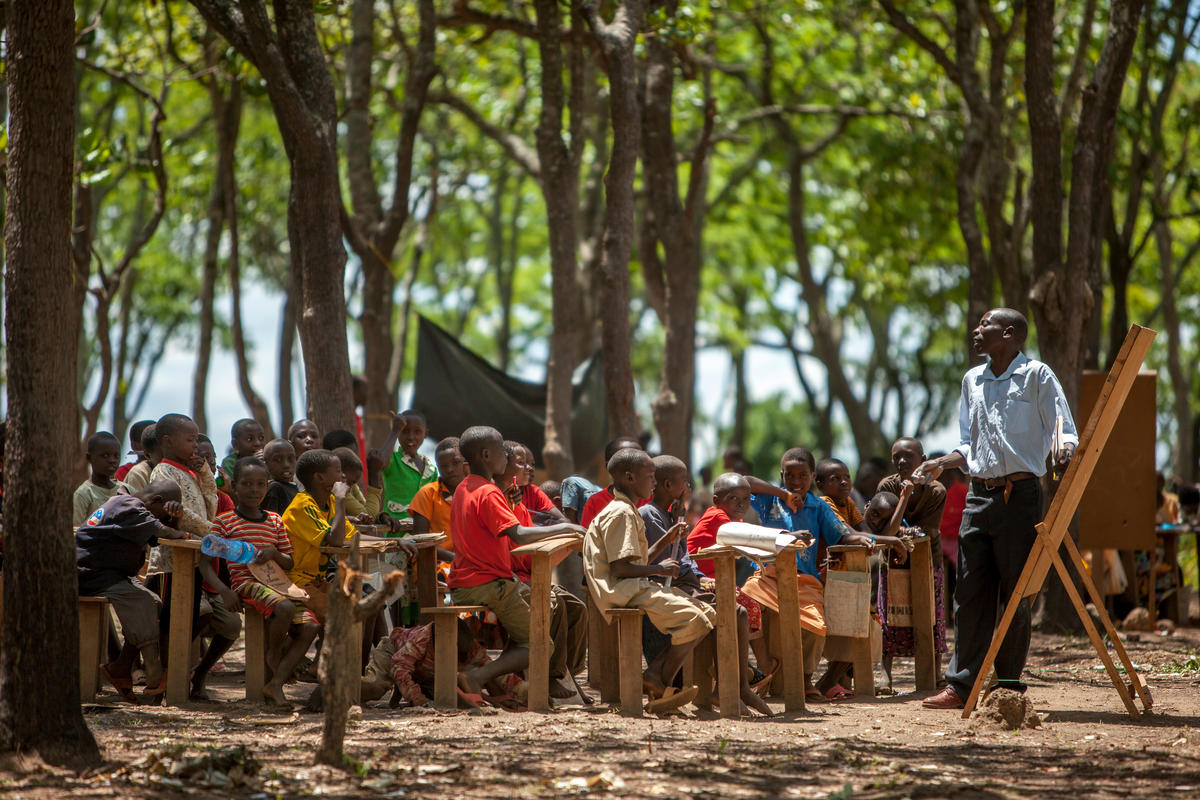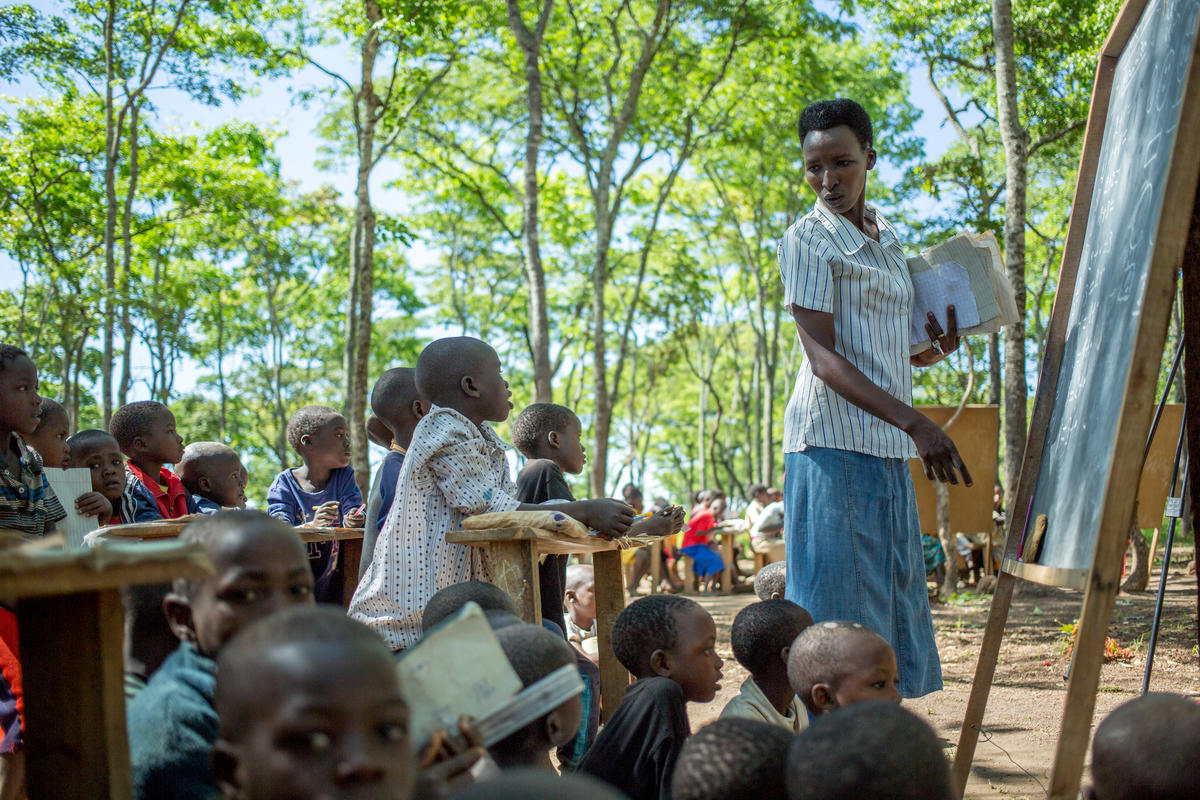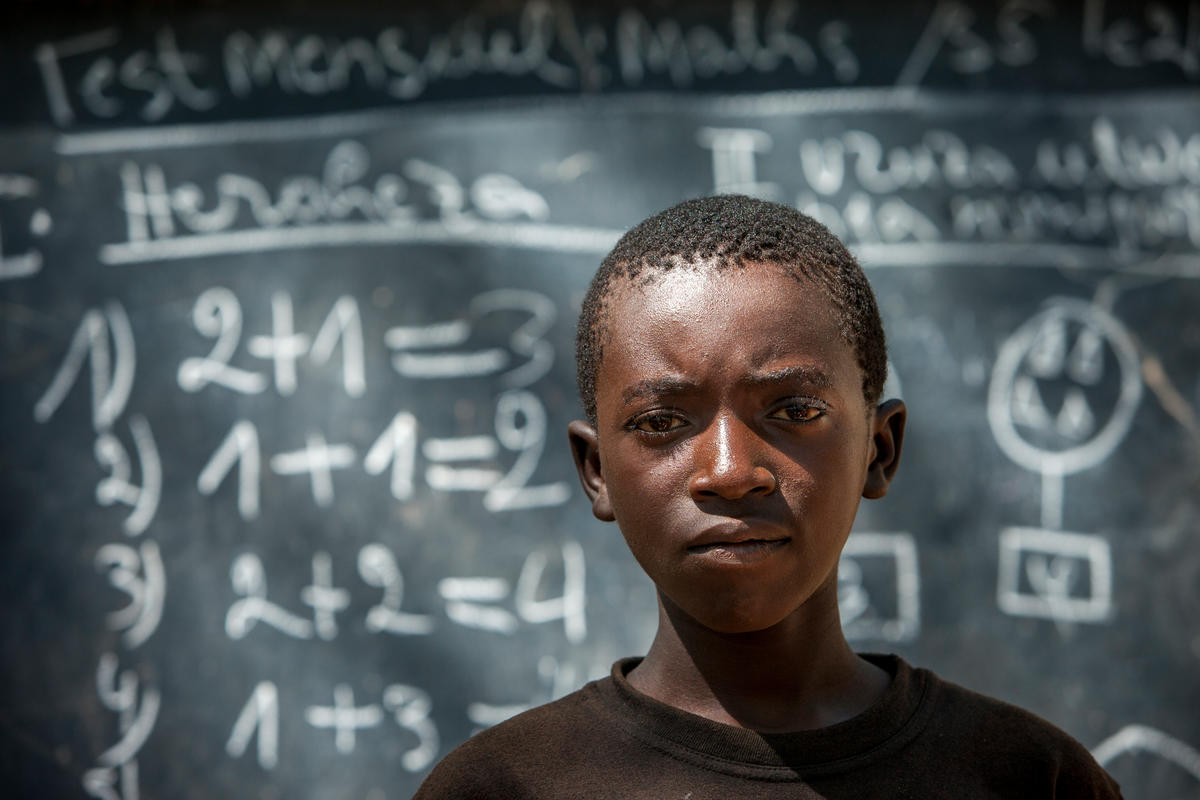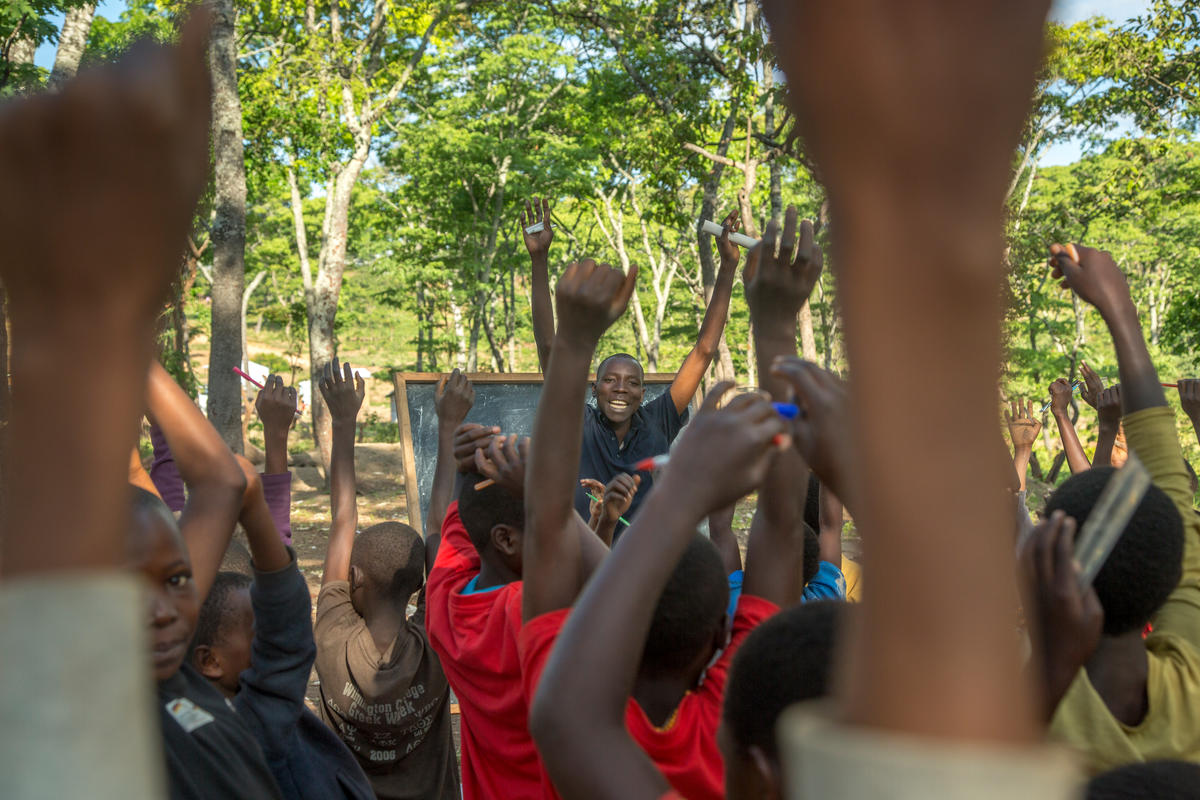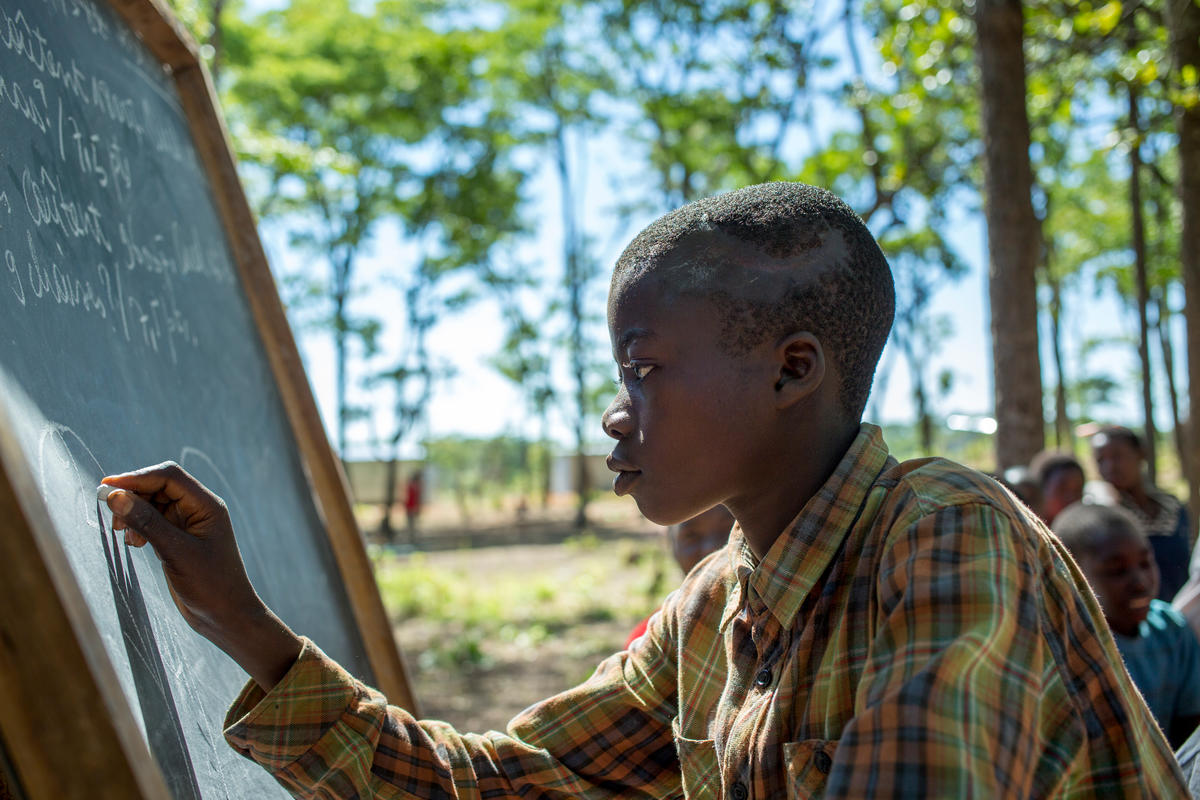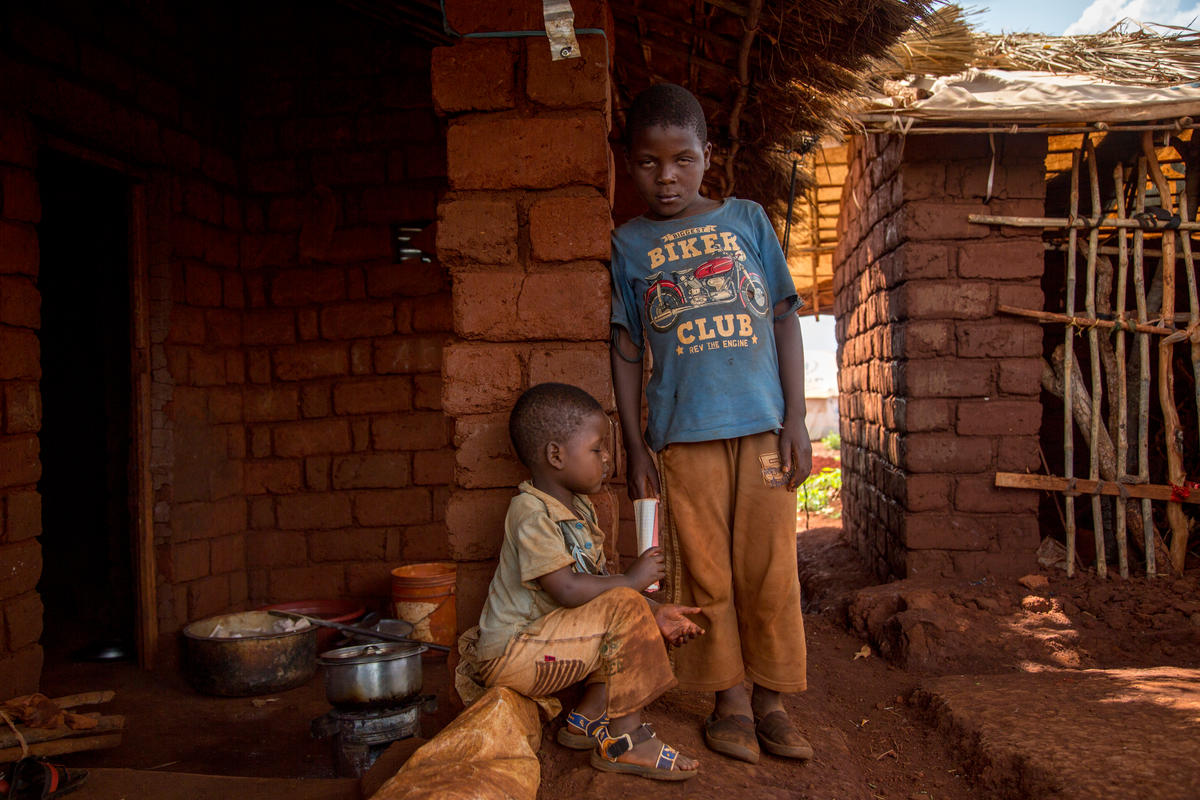Refugee children battle for education in Tanzania

Refugee children battle for education in Tanzania
Teenager Irahoze Diello is quietly confident about today’s maths test. Even without books, shoes, a safe place to study or a morning meal, he has worked hard to prepare for this moment. He just hopes the rain will hold off long enough for him to complete it.
“When it rains everything gets wet,” says Irahoze, 14, who fled Burundi and now studies beneath the trees in Tanzania’s Nduta refugee camp. “When it’s windy, the branches fall and when the sun is strong it’s too hot. Sometimes we have to stop classes.”
He is one of about 200 refugee children who attend Furaha Primary School, where a lack of funding means classes are held in the open air. Benches and blackboards are dotted among the trees, creating makeshift classrooms. For every three boys who attend, there is just one girl, and with little food to eat at home many pupils struggle to concentrate.
"Sometimes we have to stop classes.”
Bad weather can bring classes to a halt altogether.
“When it’s windy our papers fly away and when it’s raining my books are ruined,” says Tuyishemele Kenilde, 15, from Burundi, who has already been held back a year. She sighs: “it’s much more complicated to work here when it is raining and wet.”
“We have quite a few classes with no desks,” adds Hafashimana Euphrasie, 14, whose prized workbook is torn. “We really need some more so we don’t have to sit on the floor.”
The teachers, also refugees from Burundi, do what they can. “Sometimes, when branches fall, students are injured, and classes have to stop while the teachers take them to hospital,” says head teacher Ndayisenga Aimable, 34. “They haven’t eaten when they come to school because the food rations are so low and many are too hungry to learn.”
Furaha (“joy”) school is one of nine primary schools in Nduta camp, where a quarter of children aged between six and 14 do not attend school. Fifty-five per cent of the camp population are under the age of 17 and there is just one secondary school with an enrolment rate of just eight per cent. Empty stomachs, an often-exhausting trek to school and no diplomas mean that many teenagers opt out.
In Nyarugusu camp, 19-year-old Claude Nahilma has been studying at Hope Secondary School since he arrived from Burundi two years ago. He worries about the future. “It is difficult when you complete your studies to access university,” he says. “This is a dead end. I want to go home to continue my studies. It’s very muddy here and we really need rain boots.”
Enrolment is much higher in Nyarugusu, topping 80 per cent at primary level, although several schools there still lack permanent buildings and learning materials. Many children learn in flimsy tents that collapse in the wind and bake in the midday sun.
Moutaka Bahininwa is a refugee from the Democratic Republic of the Congo (DRC) and the head teacher of Sifa Primary School, where more than 2,300 children from the DRC come to learn. “Here we have a serious problem,” he says. “When it rains, we can’t hear a thing. If there is wind, then this area becomes a wind corridor. The environment is not safe for the children.”
Just yesterday, a gust of wind almost blew down 12-year-old Geny Naboy’s classroom. “We were scared,” she says. “We need more permanent structures.”
For Samwel Falliala, who is 10 and partially sighted, learning in classes of more than 100 in the howling wind, without special materials such as books in braille, is impossible.
"I want to go home to continue my studies."
“When I write on the blackboard I have to call him forward,” says his teacher, Sweddy Bikyeombe Byondo, 28. “When I write, I write in big letters.”
The challenges faced by students in Nduta and Nyarugusu camps are unfortunately all too common for child refugees worldwide. While globally, 91 per cent of children attend primary school, for refugees, that figure is far lower at only 61 per cent – and in low-income countries it is less than 50 per cent, according to a recent UNHCR report Left Behind: Refugee Education in Crisis.
As refugee children get older, the obstacles increase: only 23 per cent of refugee adolescents are enrolled in secondary school, compared to 84 per cent globally. In low-income countries a mere 9 per cent of refugees are able to go to secondary school, the study found.
A huge funding shortfall means that UNHCR, the UN Refugee Agency, and its partners have been able to build only 137 classrooms in Tanzania’s three refugee camps between 2016 and April 2017. More than 70 per cent of students in the Nduta, Nyarugusu and Mtendeli refugee camps have to study outdoors, with just 193 permanent classrooms for about 9,600 children. A high student-teacher ratio adds to the difficulties.
About 638 additional classrooms need to be built across all three camps, but funding is a serious problem. The Regional Refugee Response Plan to assist Burundian refugees in Tanzania is grossly underfunded, with just 25 per cent of funding received.
According to James Onyango, UNHCR’s Education Officer in Kibondo, it costs US$12,000 to build a classroom, each exam costs US$250, a teacher’s allowance costs US$27 per month and sending one child to school for a year costs US$35. “That is the bare minimum required so that a teacher can write on a board and students can learn something.”
UNHCR continues to work towards inclusion of refugee education into the national education system in recognition that the national system provides access to accredited, supervised and accountable education services. At the same time, UNHCR's Tanzania operation continues to seek more cost-effective alternatives for classroom construction to address the acute shortage, as crowded classrooms weaken access to equitable quality education in the refugee camps.
At Furaha Primary School in Nduta, students are excited to be moving into new, mud-brick buildings soon. Built by Save the Children, one of the UNHCR’s education partners in Nduta camp, they will comprise nine classrooms, a staff room, a head teacher’s office and latrines. At last, children will be able to focus on their studies.
“I’m so happy because, when we move, the classes will have walls,” says Hafashimana with a smile. “When I’ve finished my studies, I want to become a teacher.”



